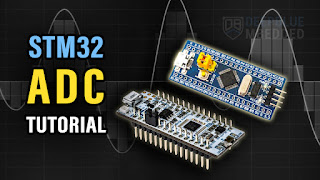How do I use GPIO pins?
Using GPIO (General-Purpose Input/Output) pins is fundamental in embedded systems and microcontroller projects. Below is a step-by-step guide on how to use them for both input and output operations, with examples for popular platforms like Arduino, ESP32, and Raspberry Pi.
1. Understanding GPIO Basics
GPIO pins can be configured as:
Digital Input (read a button or sensor).
Digital Output (control an LED or relay).
Analog Input (read sensors like potentiometers, ADC required).
PWM Output (dim LEDs, control servo motors).
Special Functions (I2C, SPI, UART for communication).
2. Setting Up GPIO Pins
A. Arduino (AVR/ARM)
Digital Output (Control an LED)
void setup() { pinMode(13, OUTPUT); // Set pin 13 as output } void loop() { digitalWrite(13, HIGH); // Turn LED ON delay(1000); digitalWrite(13, LOW); // Turn LED OFF delay(1000); }
Digital Input (Read a Button)
void setup() { pinMode(2, INPUT_PULLUP); // Enable internal pull-up resistor Serial.begin(9600); } void loop() { int buttonState = digitalRead(2); Serial.println(buttonState); // Prints 1 (HIGH) when open, 0 (LOW) when pressed delay(100); }
Analog Input (Read a Potentiometer)
void setup() { Serial.begin(9600); } void loop() { int sensorValue = analogRead(A0); // Read from analog pin A0 Serial.println(sensorValue); // Value between 0-1023 (10-bit ADC) delay(100); }
PWM Output (Dim an LED)
void setup() { pinMode(9, OUTPUT); // PWM-capable pin (~) } void loop() { analogWrite(9, 128); // 50% duty cycle (0-255) delay(1000); }
B. ESP32 (Wi-Fi/BLE Microcontroller)
Digital Output (Blink an LED)
void setup() { pinMode(2, OUTPUT); // Built-in LED on ESP32 DevKit } void loop() { digitalWrite(2, HIGH); delay(500); digitalWrite(2, LOW); delay(500); }
Analog Input (ESP32 has 12-bit ADC)
void setup() { Serial.begin(115200); } void loop() { int sensorValue = analogRead(34); // Use GPIO34 (ADC1_CH6) Serial.println(sensorValue); // 0-4095 (12-bit resolution) delay(100); }
PWM (LEDC Library for ESP32)
const int ledPin = 2; // GPIO2 const int freq = 5000; // PWM frequency const int channel = 0; // PWM channel (0-15) const int resolution = 8; // 8-bit (0-255) void setup() { ledcSetup(channel, freq, resolution); ledcAttachPin(ledPin, channel); } void loop() { for (int dutyCycle = 0; dutyCycle <= 255; dutyCycle++) { ledcWrite(channel, dutyCycle); // Fade LED delay(10); } }
C. Raspberry Pi (Linux SBC)
Using Python (RPi.GPIO Library)
Digital Output (Blink an LED)
import RPi.GPIO as GPIO import time GPIO.setmode(GPIO.BCM) # Use Broadcom pin numbering GPIO.setup(17, GPIO.OUT) # GPIO17 as output try: while True: GPIO.output(17, GPIO.HIGH) # LED ON time.sleep(1) GPIO.output(17, GPIO.LOW) # LED OFF time.sleep(1) except KeyboardInterrupt: GPIO.cleanup() # Reset GPIO
Digital Input (Read a Button)
import RPi.GPIO as GPIO import time GPIO.setmode(GPIO.BCM) GPIO.setup(27, GPIO.IN, pull_up_down=GPIO.PUD_UP) # Enable pull-up try: while True: if GPIO.input(27) == GPIO.LOW: print("Button Pressed!") time.sleep(0.1) except KeyboardInterrupt: GPIO.cleanup()
PWM (Software PWM on Raspberry Pi)
import RPi.GPIO as GPIO import time GPIO.setmode(GPIO.BCM) GPIO.setup(18, GPIO.OUT) pwm = GPIO.PWM(18, 1000) # 1kHz frequency pwm.start(50) # 50% duty cycle try: while True: pass except KeyboardInterrupt: pwm.stop() GPIO.cleanup()
3. Common Mistakes & Fixes
| Issue | Solution |
|---|---|
| LED not lighting up | Check polarity (long leg = anode) |
| Button always reads HIGH/LOW | Use INPUT_PULLUP or external resistor |
| Analog readings noisy | Add a capacitor (0.1µF) between sensor and GND |
| PWM not working | Ensure the pin supports PWM (marked with ~ on Arduino) |
| ESP32 ADC inaccurate | Use analogReadMilliVolts() for better precision |
4. Advanced GPIO Uses
Interrupts (trigger actions on button press without polling).
Multiplexing (drive many LEDs with fewer pins).
Bit-banging protocols (custom I2C/SPI/UART if hardware peripherals are unavailable).
Final Tips
Always check pinout diagrams (e.g., Arduino Uno vs. ESP32).
Use logic level shifters when interfacing 3.3V and 5V devices.
For high-current loads (motors, relays), use a transistor/MOSFET driver.




评论
发表评论